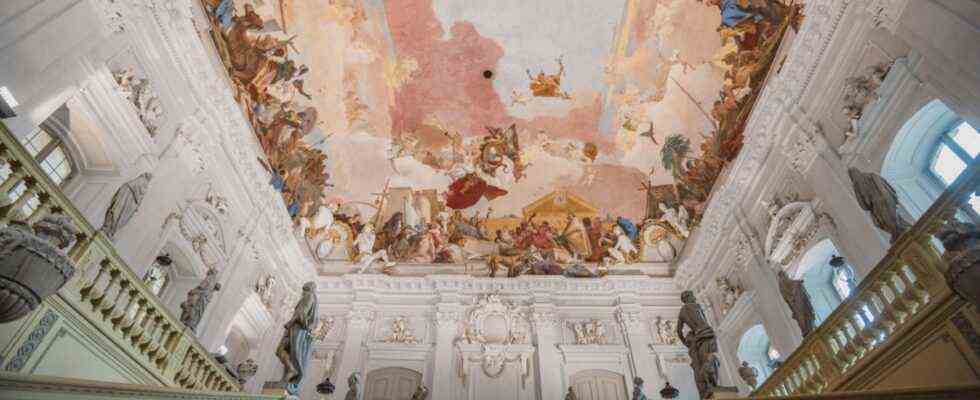Forty years ago, the Würzburg Residence was the first Bavarian cultural asset to be included in the Unesco World Heritage List. Finance and Home Affairs Minister Albert Füracker (CSU) recalled this in Munich. “Our joint responsibility is to protect and preserve this globally unique architectural jewel of Würzburg.” In the past seven months, for example, the partly baroque coat of arms above the main entrance of the residence has been extensively restored.
On October 30, 1981, the world cultural authority Unesco declared the residence and the courtyard garden to be Bavaria’s first world heritage site – and the third nationwide. Today from Bavaria are also on this list: the pilgrimage church “Die Wies” in Upper Bavaria, the old towns of Bamberg and Regensburg, the borders of the Roman Empire (Limes), the prehistoric pile dwellings around the Alps, the Margravial Opera House in Bayreuth and the Augsburg Water management system, the Danube Limes and Bad Kissingen as one of the “Great Baths of Europe”. Only cultural and natural sites of outstanding universal value are designated as world heritage.
The foundation stone for the residence was laid on May 22, 1720. Even then, the building was known as the “castle above the castles”. The builder was Balthasar Neumann (1687-1753). Originally the castle was designed as a model building for the prince-bishops. The dimensions of the house: almost 170 meters long, around 300 rooms, with around 670 square meters the second largest continuous ceiling fresco in the world by the painter Giovanni Battista Tiepolo (1696-1770). The wines of the State Court Cellar have been stored under the castle for centuries – it is the oldest and one of the largest wineries in Germany.
For Bavaria’s Minister of Finance and Home Affairs, Albert Füracker, the residence in Würzburg is the epitome of the Baroque era.
(Photo: Karl-Josef Hildenbrand / dpa)
In 1745 the Austrian Empress Maria Theresa stayed in the castle, later the residence was the venue for a NATO conference during the Cold War. “The Würzburg Residence with the Hofgarten and Residenzplatz is one of the most magnificent royal courts in Europe and the epitome of the Baroque”, emphasizes Füracker on the occasion of the Unesco anniversary this Saturday. “The Bavarian heritage sites are highly relevant to tourism for the regions that have been awarded, even if it is not possible to measure in detail the extent to which guests from near and far set out because of the award as a World Heritage Site,” said a spokesman for the Ministry of Economic Affairs.
The state manager of the Bavarian Hotel and Restaurant Association, Thomas Geppert, pointed out that tourism should be sustainable around the world heritage. Because: Sprawling, uncontrolled tourism could threaten the world heritage. An important issue is therefore to direct the flow of visitors to the World Heritage sites in such a way that they are not damaged. “Preserving our monuments means preserving part of our history and identity for future generations,” said Art Minister Bernd Sibler (CSU). If the Free State has its way, Germany’s new list of proposals for future world heritage should include: the Nuremberg Palace of Justice as the scene of the war crimes trials and the Munich Olympic Park with the sports facilities for the 1972 Olympic Games.
According to a psychologist, such places should be designed to be age-appropriate and exciting. “We are now telling you which culture you should value” – this type of knowledge transfer urgently needs to be revised, said Katherine Heid from the Federal Association for Cultural Education for Children and Young People in Remscheid (North Rhine-Westphalia). “Nobody asks the youngsters whether there are other things that they would like to see there or that they would like to discuss there that they would like to create.” Instead, young people are often only “impressed with offers that you think they might like,” said Heid. “For me, it’s about filling these places with meaning.” To this end, those responsible in World Heritage sites across Germany should work with local youth culture centers, music schools, youth art schools or film associations to develop concepts that enable schoolchildren and day-care center children to learn why it is important to preserve the world heritage.

